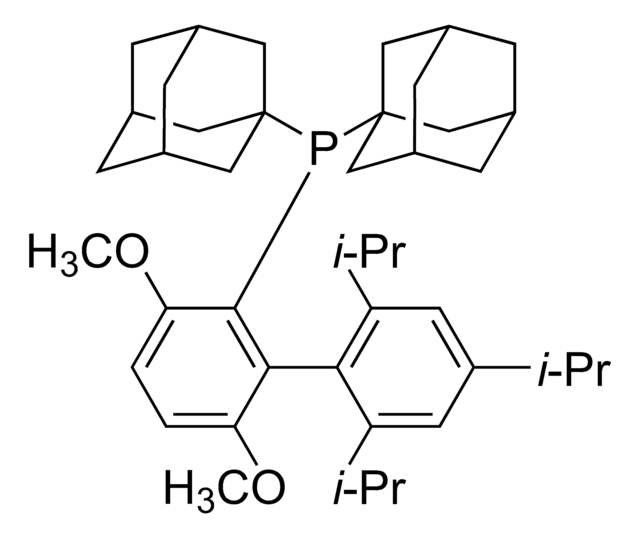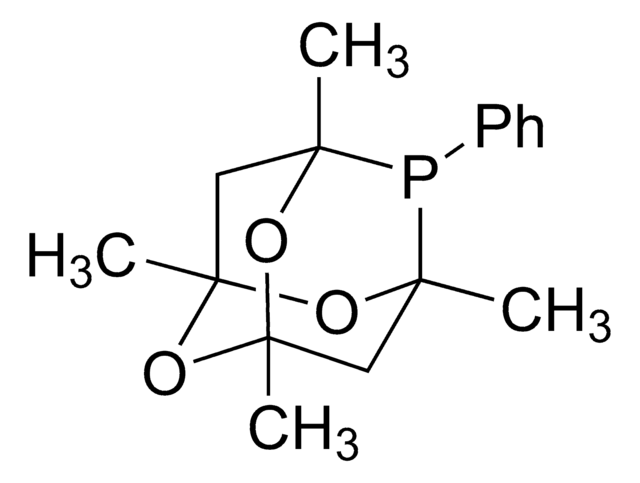900277
Bis(3,5-bis(trifluoromethyl)phenyl)(2′,6′-bis(dimethylamino)-3,6-dimethoxybiphenyl-2-yl)phosphine
≥95%
Synonyme(s) :
2′-(Bis(3,5-bis(trifluoromethyl)phenyl)phosphanyl)-3′,6′-dimethoxy-N ,N ,N ,N -tetramethyl-[1,1′-biphenyl]-2,6-diamine, 2′-(Bis(3,5-bis(trifluoromethyl)phenyl)phosphanyl)-3′,6′-dimethoxyN2,N2,N6,N6 -tetramethyl-[1,1′-biphenyl]-2,6-diamine, 2-{Bis[3,5-bis(trifluoromethyl)phenyl]phosphino}-3,6-dimethoxy -2′,6′-bis(dimethylamino)-1,1′-biphenyl
About This Item
Produits recommandés
Niveau de qualité
Pureté
≥95%
Forme
powder or crystals
Capacité de réaction
reaction type: Buchwald-Hartwig Cross Coupling Reaction
reaction type: Heck Reaction
reaction type: Hiyama Coupling
reaction type: Negishi Coupling
reaction type: Sonogashira Coupling
reaction type: Stille Coupling
reaction type: Suzuki-Miyaura Coupling
Pertinence de la réaction
reagent type: catalyst
reaction type: Cross Couplings
reagent type: ligand
Pf
160.3 °C
Groupe fonctionnel
phosphine
Application
Mentions de danger
Classification des risques
Aquatic Chronic 4
Code de la classe de stockage
11 - Combustible Solids
Classe de danger pour l'eau (WGK)
WGK 3
Point d'éclair (°F)
Not applicable
Point d'éclair (°C)
Not applicable
Certificats d'analyse (COA)
Recherchez un Certificats d'analyse (COA) en saisissant le numéro de lot du produit. Les numéros de lot figurent sur l'étiquette du produit après les mots "Lot" ou "Batch".
Déjà en possession de ce produit ?
Retrouvez la documentation relative aux produits que vous avez récemment achetés dans la Bibliothèque de documents.
Les clients ont également consulté
Contenu apparenté
The Buchwald group has developed a series of highly active and versatile palladium precatalysts and biarylphosphine ligands used in cross-coupling reactions for the formation of C-C, C–N, C–O, C–F, C–CF3, and C–S bonds. The ligands are electron-rich, and highly tunable to provide catalyst systems with a diverse scope, high stability and reactivity. Furthermore, the new series of precatalysts are air-, moisture and thermally-stable and display good solubility in common organic solvents. The use of precatalysts ensures the efficient generation of the active catalytic species and allows one to accurately adjust the ligand:palladium ratio. The ligands, precatalysts and methodology developed in the Buchwald group are user friendly and have rendered previously difficult cross couplings reactions, much easier to achieve.
Notre équipe de scientifiques dispose d'une expérience dans tous les secteurs de la recherche, notamment en sciences de la vie, science des matériaux, synthèse chimique, chromatographie, analyse et dans de nombreux autres domaines..
Contacter notre Service technique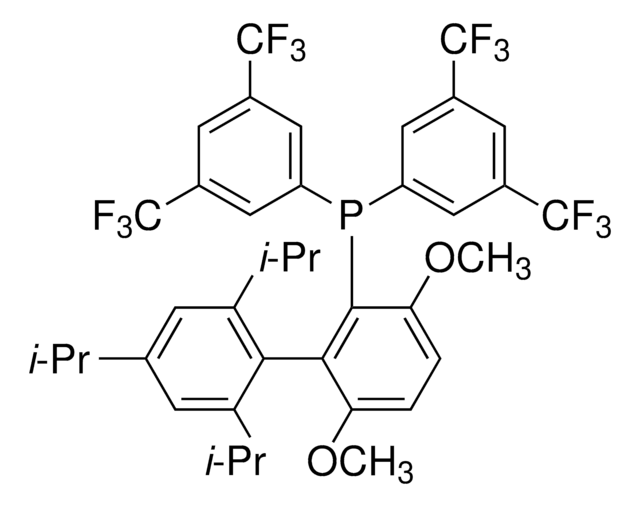

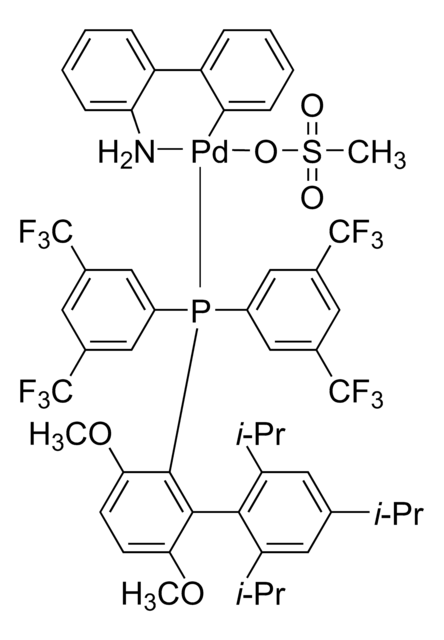

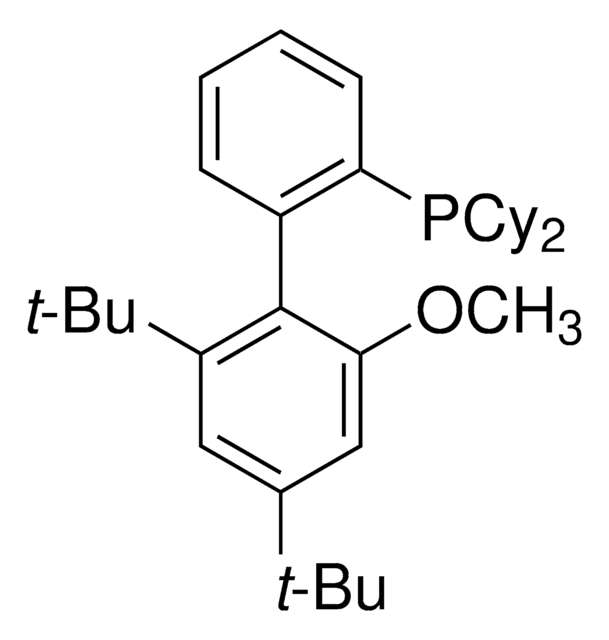




![2-[2-(Dicyclohexylphosphino)phenyl]-N-methylindole 97%](/deepweb/assets/sigmaaldrich/product/structures/224/910/4302f379-b335-4352-9f7d-67b84861582f/640/4302f379-b335-4352-9f7d-67b84861582f.png)


